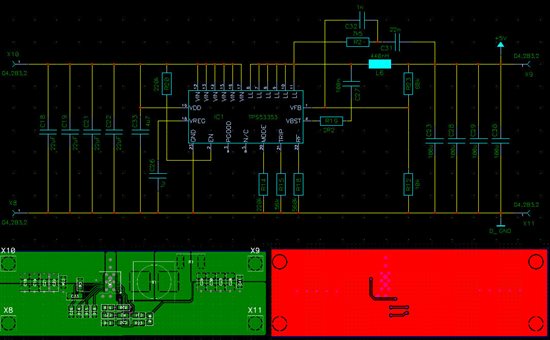Hello
how sensitive the TPS53353 responded to a 2-layer layout?
I make no attempt to run my board.
If I burden the output, the output breaks together
Is a multilayer mandatory?
I think the high MOSFET did not controlled properly.
The Regulated 5V is OK but the PowerGood Pin is low ( with a Pullup Resistor )
Could it be an internal reset that responds to glitches?


